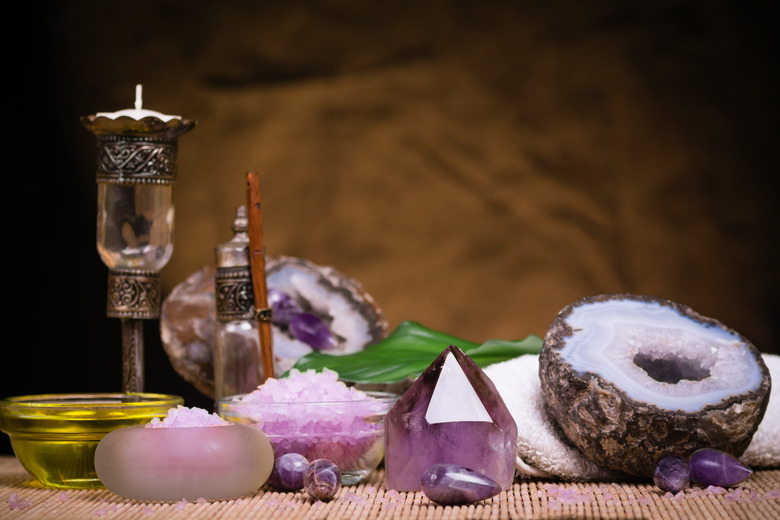How To Find Crystals
Crystals and gems form in different locations within the Earth, in dissimilar environments. Crystals are brought to the surface through faulting, folding, large-scale uplift, mining and volcanism – as with amethyst blue-purple crystals. Finding crystals can be daunting at first until you know where to look.
Research State Mining and Mineral Departments
Research State Mining and Mineral Departments
Most states have a department that oversees mining operations within its boundaries that you can review online. These sites typically identify the minerals, gems and precious metals being mined within the state along with maps of current and abandoned mining locations. Check for inactive mining claim locations to avoid encroaching on someone's claim. Since many crystals are removed from the earth through mining operations, start by visiting old mining claims and rummaging through the tailing piles alongside mine adits but not inside tunnels, as these areas can be unsafe. Wear heavy gloves and keep on the lookout for deadly snakes, depending on the area and the season.
Earthquake Fault Zones
Earthquake Fault Zones
Areas on the planet's surface that show clear evidence of fault lines and uplifts offer an ideal location to hunt for crystals. Check the area for ribbons of white quartz, which can also be found near known granite and gold deposits. Abandoned quarries where sand and gravel have been removed provide another location where crystals can sometimes be found, depending upon the geology of the location.
Hydrothermal Springs and Road Cuts
Hydrothermal Springs and Road Cuts
Many crystals form through hydrothermal processes beneath the ground and are sometimes brought to the surface near hot springs locations. Opals, agate and amethyst crystals and gems are often found close to these types of locations, where heated waters push their way through to the surface. Any place that has been dug out, graded or built up, such as in the cuts or trenches that occur alongside roads offer locations where crystals might be found.
Volcanic Tubes
Volcanic Tubes
Amethyst crystals typically form inside a volcanic tube, lining the inside of the lava tube with colorful blue-purple crystalline structures. Areas of known volcanic activities, such as along the Cascades mountains that run from Washington all the way into Northern California, provide excellent locations for finding a variety of crystals.
Equipment and Safety
Equipment and Safety
Before you start out, you'll need some tools: a small rock hammer or geologist's pick, small bucket, large or small cold chisel and a mallet. When you hike in wilderness areas hunting crystals, wear tough work or safety boots that extend beyond your ankles for solid support when rummaging along hillsides. Carry a small first-aid kit, a canteen for water and wear a hat to help keep you cool. In areas where there are poisonous snakes and other wildlife, wear long-legged pants and be aware of your environment. Always tell someone exactly where you are going and how long you expect to be gone, and check in with them when you return.
Cite This Article
MLA
Brenner, Laurie. "How To Find Crystals" sciencing.com, https://www.sciencing.com/crystals-5640076/. 13 March 2018.
APA
Brenner, Laurie. (2018, March 13). How To Find Crystals. sciencing.com. Retrieved from https://www.sciencing.com/crystals-5640076/
Chicago
Brenner, Laurie. How To Find Crystals last modified March 24, 2022. https://www.sciencing.com/crystals-5640076/
